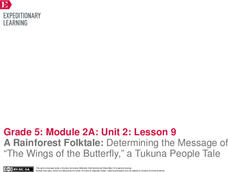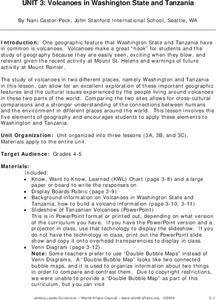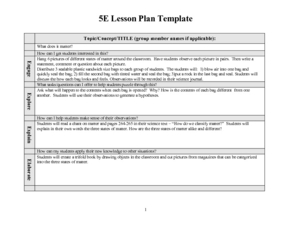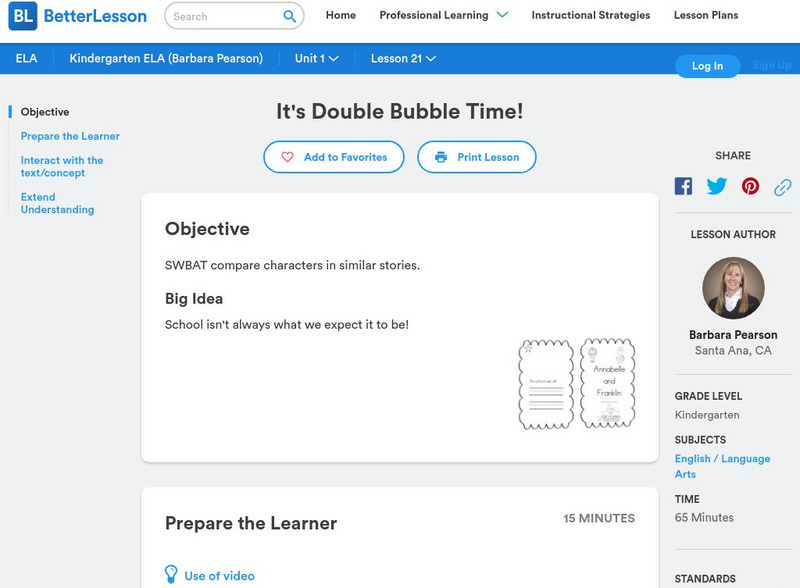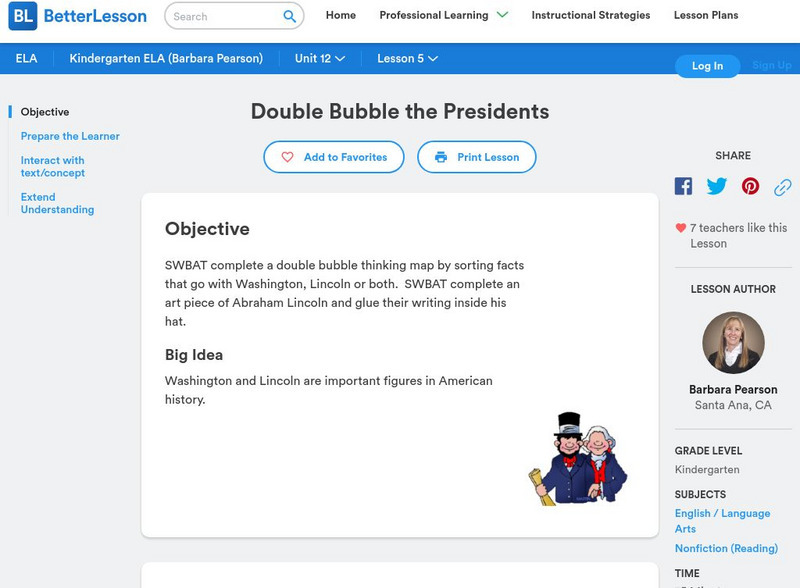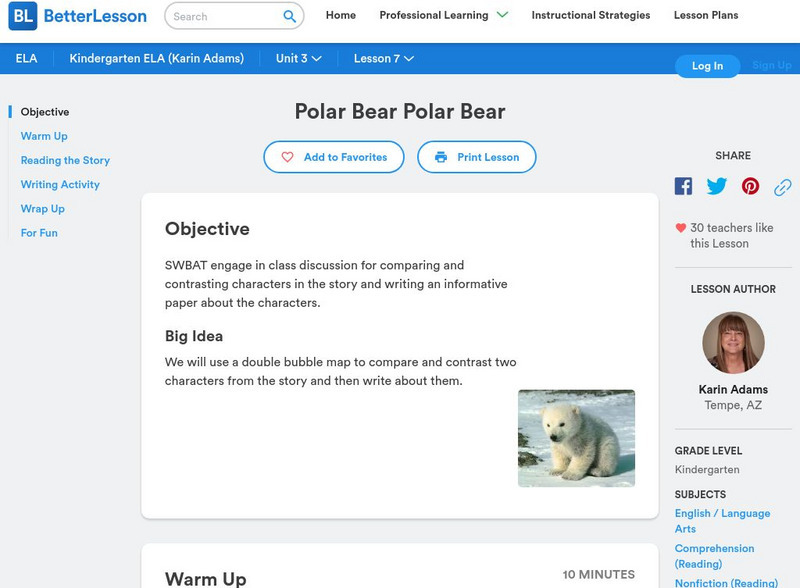EngageNY
A Rainforest Folktale: Determining the Message of “The Wings of the Butterfly,” a Tukuna People Tale
Did you the message? Scholars listen to a read aloud of The Wings of the Butterfly to summarize and determine the message of the text. They discuss the folktale and vocabulary in groups, then use a double bubble map to compare the story...
Curated OER
Using a Venn Diagram to Compare / Contrast: Double Bubble
Create a "Double Bubble" to organize information in a Venn diagram-like graphic organizer. There are a few options included to differentiate this assignment, but unfortunately, there are no topics for selection. Provide your...
Curated OER
Bullying
Fourth graders define the role of a bully, then participate in skits with bullying situations. For this health and safety lesson, the teacher introduces the idea of bullying with the book Enemy Pie. Then students create a double bubble...
Curated OER
Mr.Bubble's News
Second graders use a double bubble thinking map to compare newspapers and magazines. They browse through magazines and newspapers to identify characteristics of each type of text and find 5 features for each type of text. They share...
Curated OER
Venn Diagram for Compare/Contrast
Use this instructional activity to focus on a compare and contrast writing structure in your middle school language arts class. Here, young writers compare and contrast two texts using graphic organizers. They use a double bubble format...
Curated OER
Reading Comprehension
In this reading comprehension lesson, 3rd graders read the story Treasury of Literature and complete various comprehension activities. Students answer factual questions about the story, analyze the story using a bubble map, and...
Curated OER
To Eat or Not to Eat?
Learners identify various parts of plants and determine which parts people eat. They conduct a celery stalk experiment in which they determine the value and use of the stem, and how it helps the plant to meet its needs. Students use a...
Curated OER
What Does It Matter?
Students define matter, the chemical properties of matter, and the physical properties of matter. They name physical and chemical properties of matter (by classifying using a Tree Map). Students determine the mass, volume, and density of...
Curated OER
Edible Geometry
Students examine a chart that lists the main characteristics of polygons and 3 dimensional figures. They make examples of the polygons and figures using pretzels and gum drops showing how the gum drops are vertices and the pretzels are...
Curated OER
What Becomes of Cell?
Sixth graders analyze and compare a cell's tissues, organs and organ systems. They watch a video reviewing the body systems and design poster boards showing their functions.
Curated OER
You Gotta Have A Hat
First graders compare versions of the folktale, 'Caps for Sale.' After listening to both stories, 1st graders utilize a Venn Diagram imbedded in this instructional activity to produce a graphic organizer detailing the similarities and...
Curated OER
Looking Inside Cells
Seventh graders examine the functions and roles of membranes in cells. They discover the differences between plant and animal cells.
Curated OER
Looking Inside Cells
Seventh graders analyze and identify the role of the cell membrane and nucleus. They create flash cards to help them review cell structures. They also compare plant and animal cells.
Curated OER
Pilgrims in Style
Young scholars explore the Pilgrims and their clothing. They discuss current trends in fashion and complete a Venn diagram comparing the Pilgrim attire to present day clothing and research websites regarding the Pilgrims. After...
Curated OER
Volcanoes in Washington State and Tanzania
Students research volcanoes in Washington State and in Tanzania and create a poster on one specific volcano in each area. Once research is complete on each area, students compare and contrast volcanoes in Washington State and Tanzania.
Curated OER
What Does It Matter?
Learners match definitions with vocabulary words and learn basic facts about matter. Then, they see how to determine the physical characteristics of matter. They determine the mass, volume, and density of objects using appropriate tools...
Better Lesson
Better Lesson: Comparing and Contrasting Our Stories With a Double Bubble Map
Young scholars will identify the similarities and differences between different versions of fictional stories by completing a double bubble map. Included in this lesson are teacher questions, a bubble map printable, a video of a class...
Better Lesson
Better Lesson: It's Double Bubble Time!
School isn't always what we expect it to be! With teacher guidance, students will use a double bubble map to compare and contrast two similar characters from two books.
Better Lesson
Better Lesson: Comparing and Contrasting Two Stories Using a Double Bubble Map
In this lesson plan, 1st graders will look at two texts with the "The Three Little Pigs" story. Students will compare the approach that each of the authors takes.
Better Lesson
Better Lesson: Double Bubble the Presidents
Students will complete a double bubble thinking map by sorting facts that go with Washington, Lincoln or both. Also included in this plan is an art project, worksheets, and video of the lesson in action. Great activity to use after...
Better Lesson
Better Lesson: Polar Bear Polar Bear
In this instructional activity, students will use a double bubble map to compare and contrast two characters from the story "Polar Bear, Polar Bear, What Do You Hear?" by Bill Martin, Jr.
Other popular searches
- Double Bubble Map Template
- Double Bubble Map Organizer
- Homophones Double Bubble Map
- Double Bubble Maps Literacy
